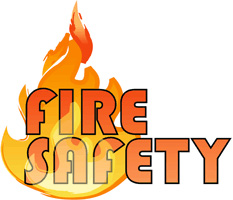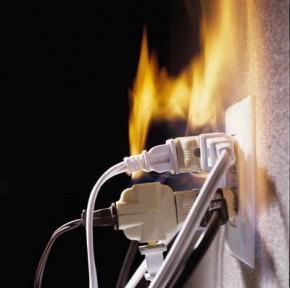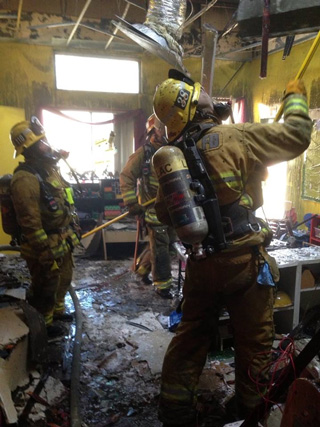 California’s fire season has just begun heating up for 2014, starting with a wildfire in Silverado Canyon. The fire began Friday morning and has spread across at least 1600 acres by Saturday afternoon. Many homes have been mandatorily evacuated, and even more voluntarily evacuated. Even “A smoke advisory was issued throughout Orange and Riverside counties, including Irvine to the west, Corona to the north, Lake Elsinore to the east, and San Clemente to the south” reports NBC news. Luckily, Santa Ana winds will not be hindering the firefighters today, although Southern California is experiencing triple digits today and, the frustrating and infamous CA drought is not helping conditions either.
California’s fire season has just begun heating up for 2014, starting with a wildfire in Silverado Canyon. The fire began Friday morning and has spread across at least 1600 acres by Saturday afternoon. Many homes have been mandatorily evacuated, and even more voluntarily evacuated. Even “A smoke advisory was issued throughout Orange and Riverside counties, including Irvine to the west, Corona to the north, Lake Elsinore to the east, and San Clemente to the south” reports NBC news. Luckily, Santa Ana winds will not be hindering the firefighters today, although Southern California is experiencing triple digits today and, the frustrating and infamous CA drought is not helping conditions either.

Whether you live in the drought-prone areas of California or the more cool and wet areas of the North, it is always smart to practice fire-safety and be prepared! Here are 10 tips, Green Businesses agrees will help protect you from fires in your life.
1) Have and maintain smoke alarms in your home.
The first and foremost step you can take to protect yourself and your family from fires is having a smoke alarm in most rooms of your home. This will alert you of fire/smoke danger at ALL times of the day. “According to the National Fire Protection Association, almost two-thirds of home fire deaths resulted from fires in properties without working smoke alarms. A working smoke alarm significantly increases your chances of surviving a deadly home fire.”
…Two-thirds of home fire deaths resulted from fires in properties without working smoke alarms.
You can purchase an environmentally friendly smoke detector at HomeSafeGuard.com
2) Be safe with candles
Do not abandon lit candles. Make sure to stay aware when one is lit and always place the candle at least 12” from anything that can burn. Also, keep candles out of reach of children and pets, whom can easily knock them down or burn themselves. Consider using flameless candles as well, which pose almost no risk compared to lit candles. Since they have no flame, there is no soot or toxic emissions as a result.
Purchase environmentally friendly flameless candles in many stores. Or see a whole product line of The Amazing Flameless Candle HERE.
3) Keep space heaters at a distance
Space heaters are a main cause of home fires because they often find themselves too close to combustible items. Make sure all combustible items (like curtains, clothes, bedding, and anything else that can easily catch fire) are further than at least three feet away from the space heater.
Many space heaters provide a more cost-efficient form of warmth than fireplaces; however, not all are a smart choice. TreeHugger.com lists some environmentally friendly choices for portable heat. Or, you can see a wide range of Space Heaters Here
 4) Keep a constant eye on the electrical aspects of your home
4) Keep a constant eye on the electrical aspects of your home
Always clean the lint drawer out after each load of laundry. Check that all cords are intact and none are fraying. Never overload extension cords and/or electrical outlets. Never place metal in the microwave. These are all common causes of household fires.
5) Never leave cooking food unattended
Unattended cooking is the leading factor of kitchen fires. If you must leave the food unattended, turn the burner off. Make sure to turn the pot handles to the back of the stove so they do not get bumped and dropped. Make sure to keep a pan lid nearby to cover the fire if it does catch aflame. Keep a current fire-extinguisher nearby the kitchen for any incidents, but never fight the fire on your own. The U.S. Fire Administration reports 57% of kitchen-fire injuries when victims tried to fight the fire themselves.
6) Know what to look for after an earthquake
Earthquakes certainly “shake” things up. Of course, always seek immediate shelter while the quake is occurring. Directly after, find a safe place to move to in preparation for aftershocks. While doing so, make sure to check a few things that could cause injury or fires. Clean up flammable liquid spills immediately. Turn off the main breaker / fuse box, to prevent any chances at an electrical fire. Water spills, appliances, and cords can all possibly be electrically charged, approach with caution. Turn gas off, and NEVER strike a match in case of a gas leak. If you smell gas, leave the building immediately with windows and doors open to air it out and let the gas escape.
7) Check holiday and decorative lighting for fire hazards
Use only decorative lights tested for safety by a recognized testing laboratory. Check lights for broken or cracked sockets, frayed or bare wires, and/ or loose connections. Throw away damaged lighting sets. Do not overload extension cords and outlets. Make sure to leave some space between lighting and combustible materials that can heat up and catch on fire after long periods of being in contact with the lighting.
Find environmentally friendly holiday and decorative lights here or at EnvironmentalLights.com
8) Realize the danger of smoking: It’s more than just health effects

Fire safety hits close to home for the author. Pictured is her father-in-law at work.
9) Educate and supervise kids on fire danger and safety
“Children under five are naturally curious about fire. Many play with matches and lighters. Take the mystery out of fire play by teaching your children that fire is a tool, not a toy.” (U.S. Fire Administration, Home Fire Prevention and Safety Tips, 2013)
If you have candles lit, hot pans cooking, or any other possible fire dangers around the home, make sure to supervise the children. It would be best not to let the kids learn the hard way in this particular matter.
10) Have an evacuation plan
Having an evacuation plan can make worlds of a difference in the surviving of your family. Be prepared and create a plan together, making sure each and every person understands his or her escape plan exactly. When possible, find at least two ways out of every room. Assign someone to assist infants, elderly, or handicapped persons as well in emergencies. Have a designated meeting spot a safe distance outside your home where everyone will meet once out of danger. “Once you’re out, stay out! Under no circumstances should you ever go back into a burning building. If someone is missing, inform the fire department dispatcher when you call. Firefighters have the skills and equipment to perform rescues.” If you find yourself blocked from your exit and stuck, close all doors between you and the fire (to slow it down) stick towels and blankets under doors to block smoke, open windows to let smoke out. Wave a flashlight or bright cloth to attract firefighters to your location.
It is so important to be prepared for the chance of fires. If a fire is spreading near your home, it is always safest to evacuate. If firefighters recommend it, I would suggest it! Practice fire safe methods at home, and be prepared. Do not hesitate to call 9-1-1 and get to safety. Fire can spread fast and every second counts.




One response to “10 Critical Tips to Protect Your Family During Fire Season”